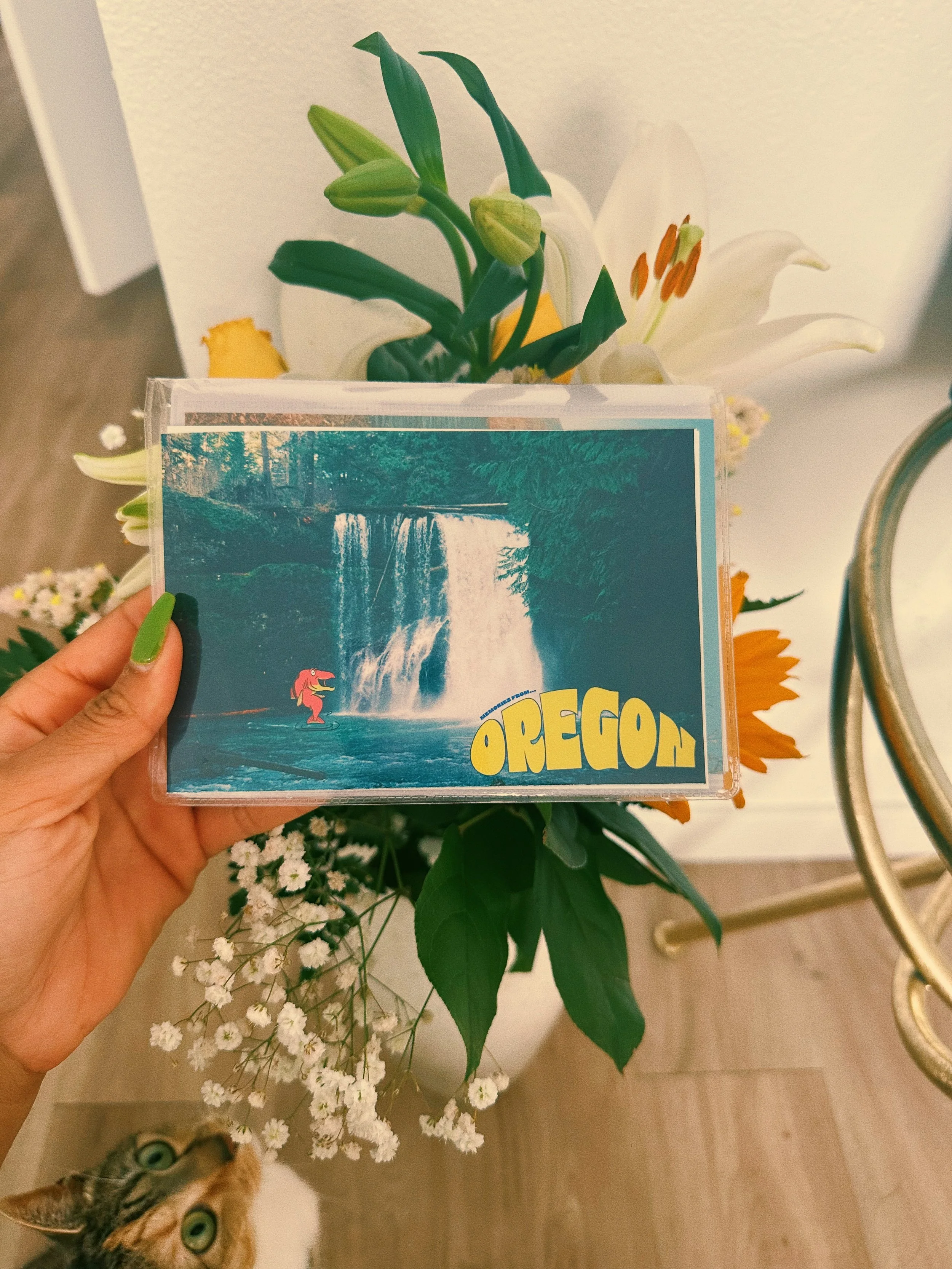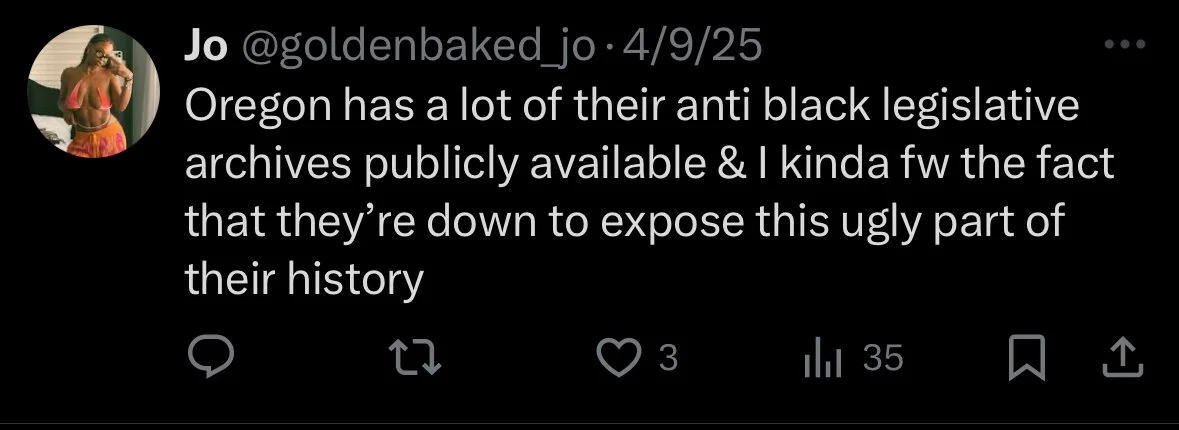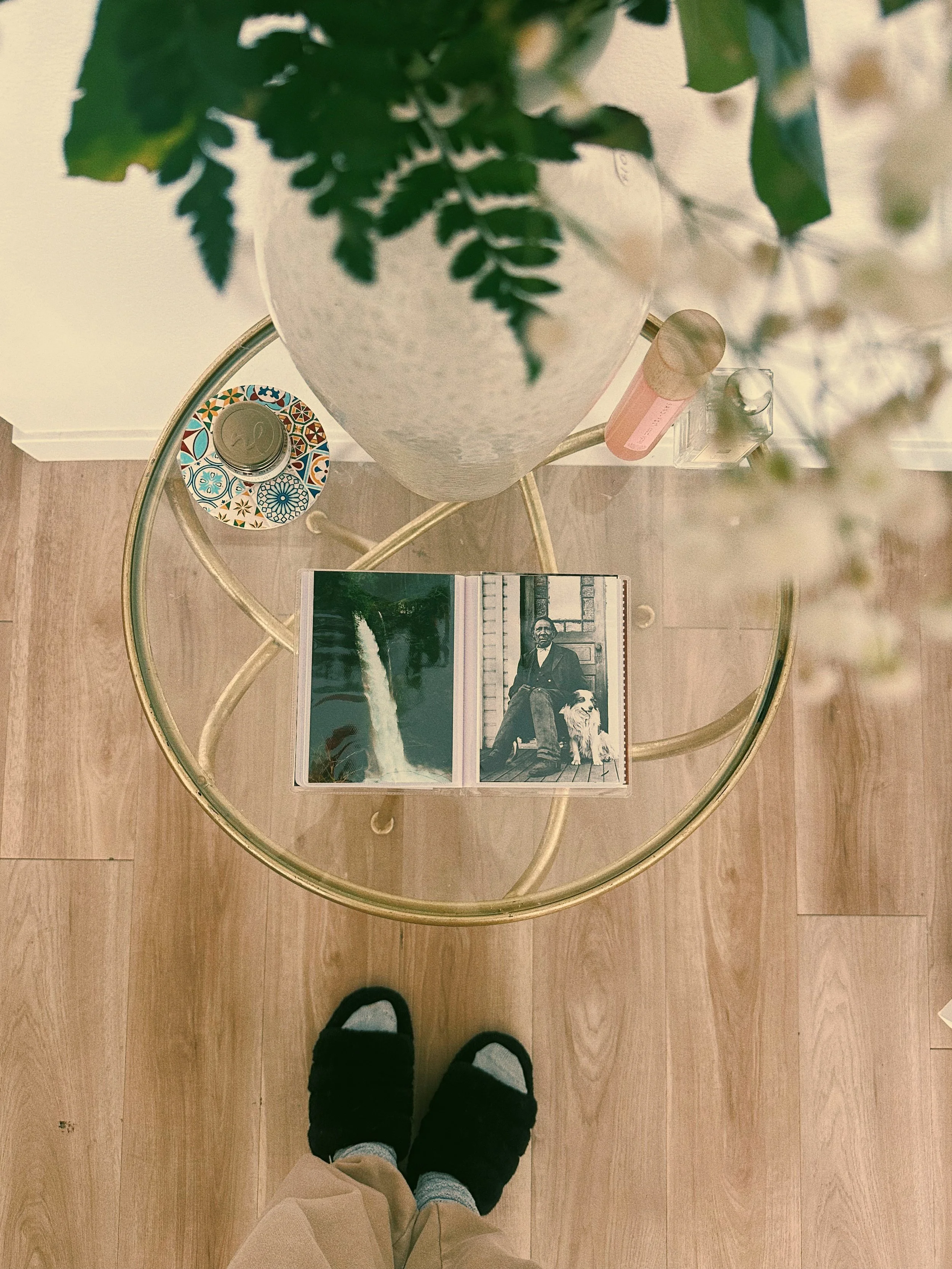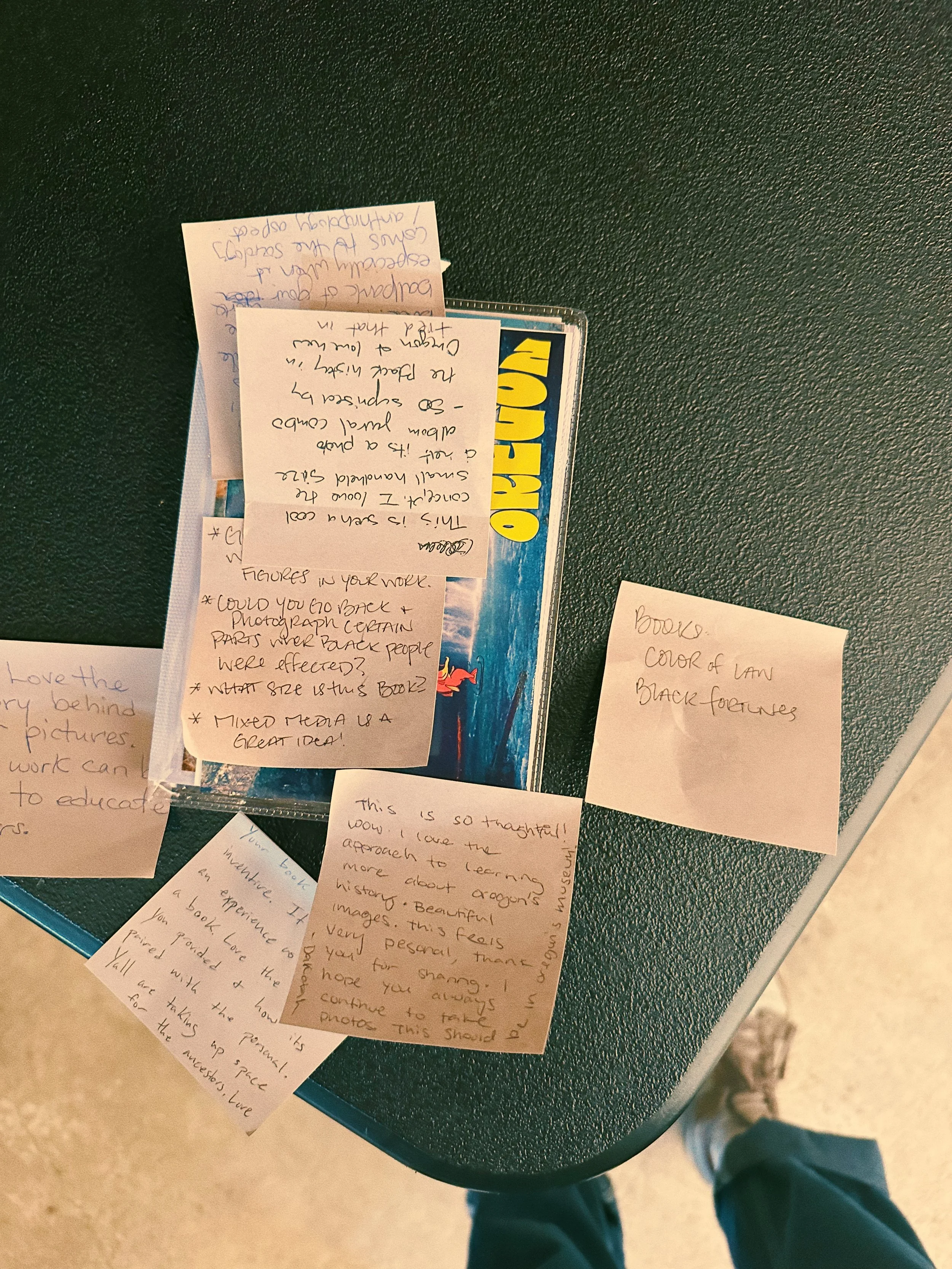Prologue — Memories from Oregon
North Winter Falls — Silver Falls State Park, Oregon (preview in fine art collection)
In March, Gabriela, and I drove 1,854 miles from our home in Los Angeles, California to Eugene, Oregon. A few weeks prior, I was accepted to a fellowship through Burntsienna Research Society, which provided a guided process for creating a photo book. Initially, I constructed a photo book with the intention of preserving our memories from Oregon, but I was lead on a deeper journey. Through the challenge of identifying my “inputs,” I gently grew into establishing an art practice: synthesizing my passions for anthropology, poetry, journaling, and, of course, photography, into a physical piece of media. Although this project is deeply personal to me, I am using the first round of Sunseekers posts to share passages from my photo book, Memories from Oregon, with the community.
Collage of photos Gabriela shot using a Cannon AF25m and Fuji film (400 iso)
Collage of photos I shot using a Canon AE-1 and Kodak Gold film
While the book is primarily comprised of 35mm film photos Gabriela and I shot, it is also a mixed media compilation of handwritten reflections, poems, and research on Oregon’s (anti)Black history. The book is almost completely analog — I stuffed these materials into a 4x6in classic vinyl photo album because, what better way to store memories?
Book cover (and Umi) - graphic design by Gabriela
Before I share passages from the book, I want to walk through what creating it felt like.
I started the fellowship somewhat blinded by self-doubt - not knowing how my work tied together. Questioning whether in just three months I could create a physical book that not only showcased my best work, but also accurately reflected my perspective on the world.
I came to realize that I didn’t have to create the book alone. In a literal sense, Gabriela graciously accepted my request to include her film and graphic work - it became our book. In a metaphysical sense, it felt like my ancestors were leading me through this work - it became our book.
Believe it or not, compiling the physical book only took about two weeks. Prior to that, I spent the first three months of the fellowship engaged in deep self-reflection.
What draws me to photography? What about the practice engages my soul?
How do my photos show my unique perspective on life? How can I incorporate my voice in a purely visual piece of work?
This reflection process felt like a slow unraveling of self - an endless search for answers. I let my random curiosities guide me.
Exchange with Brittnee that sparked my interest in Oregon’s (anti)Black history
A week after the trip to Oregon, my friend, Brittnee, sent me a reel by on the anti-black laws the state passed during the 19th century. This catapulted me into a deep dive of Oregon’s sociopolitical history. I wanted to know the stories hidden behind the landscapes that compelled me so.
What kind of fruit do the Oregon trees bear?
The book became about not only memories from our trip, but also about Earth’s memory. I researched the geological history of the land.
How Earth shape shift into this stunning beauty? What geological chaos occurred to create the blue rivers, the thundering waterfalls, and the moss coated forests?
As I went searching for answers, I stumbled across resources like the Oregon Encyclopedia - a compilation of scholarly essays related to all-things Oregon. Through this website, I also discovered the online exhibit, “Black in Oregon.” The exhibit includes biographies of Black pioneers in the mid-1800s who were often formerly enslaved, and immigrated to Oregon in search of a new lease on life. These individuals largely succeeded in achieving freedom and establishing new roots Oregon, despite the state’s Black exclusion laws which forbade them from settling there.
Going down a rabbit hole of Oregon’s Black history, back in April.
What excited me the most about these sites is that they allow users to engage with the history in a (meta)physical way by interweaving high quality scans of archives. These archives range from portraits of the Black pioneers themselves, to the legal documents that illegitimized their citizenship. The type of materials I thought I could only find digging through a library were suddenly at my fingertips.
My photobook became a research dump.
North Falls photographed by me + a portrait of George Washington, one of the earliest Black settlers in the Pacific Northwest
As Gabriela and I got our film back, I was also inspired to write haikus on the incredible symphony of creation we experienced. A co-worker randomly reminded me that the Japanese originally created haikus in the 16th century to honor the wonders of nature. It suddenly made sense why haikus felt like the perfect form of expression to describe my big feelings about Oregon’s forests. Everything started to align.
Although my brain was all over the place during this process, I was in service to its ideas. I worked on the book until the very last hour before the last session of the fellowship, but I finished it nonetheless.
Sticky notes of reactions to Memories from Oregon, written by my fellow cohort members during the last session of the Burntsienna fellowship.
I feel very raw about this project. As I share its passages, I hope the work challenges you to dig for your roots in unexpected places. I hope it shows the value of stillness and disconnection.
I hope the book is used to show our family and the world how much Gabriela and I love one another, and our deep admiration for Earth. I hope it’s passed down to our children.
I hope it shows that Black and Indigenous people belong in Oregon, and should take up space there. Because our ancestors did, against all odds. And they cared for the land. And they loved it.







